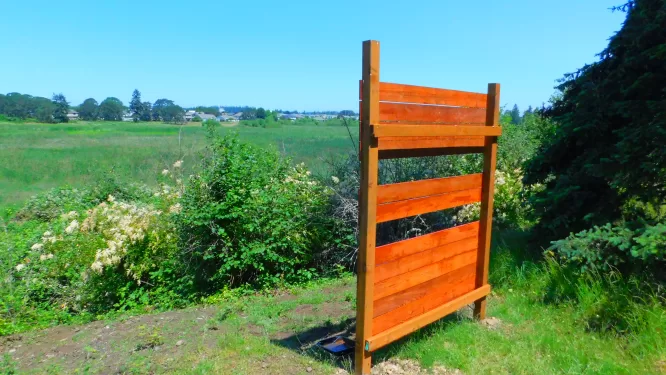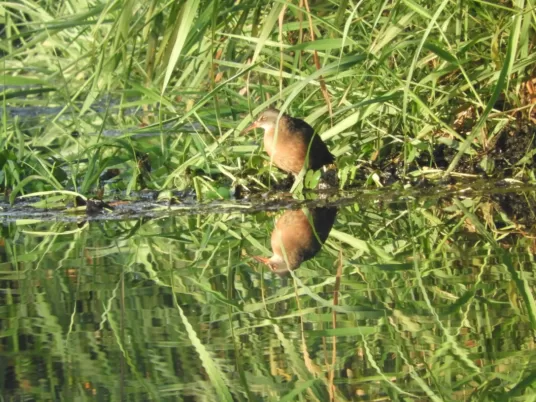Yes, Santa, there is a Virginia (Rail)
by Marcia Wilson
From December 14, 2022 to January 5 of 2023 the Audubon Society hosts its Annual Bird Count–a way for volunteer citizens to add to long-term, valuable data about the world around us. Volunteers like these are why Dr. Faust put together two blinds so the upland and lowland watchers can find the hard-to-find birds.

For one such volunteer, Cherie St. Ours, an early holiday miracle occurred. She managed to photograph one of our Virginia Rails hunting for food in the retention ponds upstream. We aren’t at all jealous that she emailed us to gloat–that is, we share in her victory. It only took her 3 months to catch the bird in the act!
For perspective, getting a Rail in your camera falls between snapping a shot of an African Spanaway Porcupine and a Point Defiance Feral Peacock. You know they are there, but that’s about all you can say. They don’t do paparazzi.

The capture followed serious efforts on her part—Id’ing the Rail by sound is easier, for they have a weird, weird call often used as a special effect for atmospheric filming. You may recognize it if you are a fan of swampy, badly-lit horror films in the middle of nowhere that ends well for nobody. Finding them is no easier for us today than when Audubon himself went looking for them:
‘Excepting our Little Partridge, I know no small bird so swift of foot as the Virginian Rail.’
They rival a cartoon Road Runner for speed on the ground, and the thick tangles of marsh plants may as well be open roads, as skillfully as they maneuver them. It is exciting to know Rails are alive and well here. Only a small portion of North America hosts these little birds year-round, and Western Washington is one of those portions.
Even when you know they are there, you may never see one. This is aggravating as they perform a valuable function in our wetlands–some of their favorite foods, the American Bullfrog and non-native crayfish, are invasive and destructive. Wouldn’t we love to snap a shot of them caught in the act, doing their part for a healthier marsh by ‘dining out’?
But don’t give up hope–the past three years at the CPTC wetlands have given us many surprises and ‘new’ discoveries for the college data. And if someone wants to collect eerie sounds for their film projects…we know where to send you!